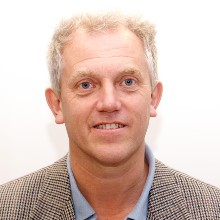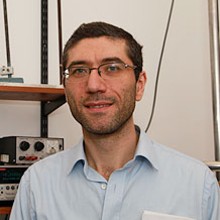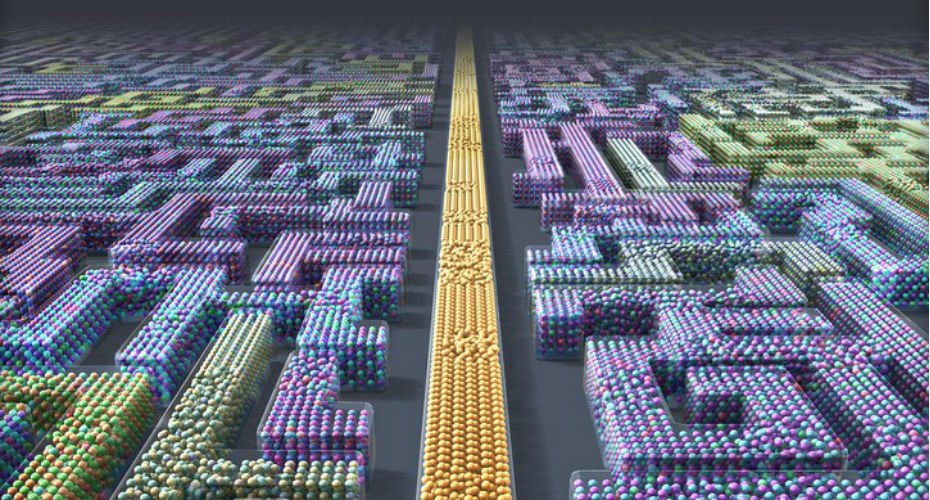Phase change materials
phase-change materials
phase-change materials
phase-change materials
Exploiting switchable electrical and optical properties of phase change materials for photonic, neuromorphic computing, displays and data storage technologies.
Research groups associated with phase change materials at Exeter
- Nano Engineering Science and Technology Group (NEST)
- Electromagnetic and Acoustic Materials (EMAG)
- Quantum Systems and Nanomaterials (QSN)
Contact us: metamaterials@exeter.ac.uk
Group facilities include:
- Class 10,000 clean rooms
- Nanostructures measurement (liquid helium and low-temperature systems)
- 6xCVD tube furnaces (from 1000-18000C)
- AIST AFM with CAFM, STM, EFM, MFM modes
- Bruker Advance X-ray diffractometer and reflectometer
- Bruker Veeco Innova AFM
- Bruker Veeco Innova SPM with CAFM, MFM, EFM and STM modes
- Carbolite Muffle furnace
- Cryogenic FTIR system ( to 30 micrometres)
- Electrochemistry (electroplating) work-station
- FCT (German) Hot-press (25 tonne, 22000C)
- Fisher Scientific Vis/UV spectrometer
- High-temperature furnace (12000C)
- Horiba/AIST TERS system (tip enhanced Raman Spectrometer)
- Janis CTI-22 closed-circuit He optical cryostat
- Jasco UV-VIS-NIR microspectrophotometer
- Jiplec Rapid Thermal Processing system (to 1200 C, 50 C/sec cooling rate)
- MDC cryogenic probe test-station
- Nanomaterials laboratories
- Nordiko (6") multi-target RF/DC sputter system
- Purpose-built (2") multi-target sputtering system
- Quantachrome Gas Sorption Analyser (BET)
- Solar cell testing work-station
- Special purpose laser laboratories
- TA Instruments Ltd Q600 TGA
- Thermomicroscope SPM with SThM, STM, EFM, MFM modes and liquid cell
Case study
Associate Professors
Professor C David Wright

Active/Reconfigurable Metasurfaces; phase-change materials
Conventional metamaterials and metasurfaces (the 2D form of metamaterials) are ‘fixed-by-design’, with performance determined by the form of their resonating structures and the properties of the materials of which they are made. Far greater functionality and application would be available if we could develop active versions, i.e. metamaterials whose response can be dynamically adapted, tuned or reconfigured. At Exeter we are doing just this, using chalcogenide phase-change materials to deliver active optical metasurfaces that can work from the UV right out to the THz, and with applications ranging from LiDAR to multispectral imaging, optoelectronic displays, chemical sensing and much more.
Professor Monica Craciun

Nanoscience and Nanotechnology
My research expertise spans across applied research in nanotechnology, electronic and optoelectronic devices to fundamental research in nanoscience (quantum phenomena, molecular electronics, nano electronics, spintronics) and materials science.
In particular, I am currently focused on the study of 2D materials such as graphene, functionalized graphene and layered dichalcogenides (e.g. MoS2, WS2), and of their hybrids with other emerging materials (e.g. organic semiconductors, perovskites). The aim is to create new materials and devices with unique electronic and optoelectronic properties not available in any other systems. In particular, we explore novel devices that can be used in emerging technologies such as electronic textiles, multifunctional smart coatings, or in a new generation of highly efficient solar cells and light emitting devices.
Professor Rob Hicken

Magnetic and spintronic materials and devices
The spin angular momentum of the electron underlies the magnetism of materials with permanent magnetic order and is manipulated in spintronic devices. The non-volatility of magnetic order, and the resulting energy efficiency of magnetic and spintronic devices, is highly attractive for information technology. We use a combination of electrical, microwave, optical and x-ray measurement techniques to study new materials that can be controlled at the nanoscale and down to femtosecond timescales to provide improved device functionality.
Professor Saverio Russo

Quantum Systems and Nanomaterials
My research group is pioneering the novel science found in nano-systems. In particular, we are currently studying the electrical properties of graphene materials, which are just one or few carbon atom thick with honeycomb structure. In these materials charge carriers have a record high mobility at room temperature and behave as massless Dirac fermions.
Our main research directions are
- Graphene-based flexible and transparent electronic devices.
- Novel technologies for fabricating suspended and double gated graphene transistors to access the electric field tuneable low-energy band structure in few-layer graphene and the electro-mechanical properties.
- Search for highly conductive and transparent materials.
- Superconducting-graphene hybrid structures.
Associate Professors
Professor Mustafa Aziz

Magnetic materials and transducers
The magnetic response of magnetic materials due to the interaction with electromagnetic fields is influenced by the magnetic properties, shape and size of the magnetic structure. Controlling the shape and size of the magnetic structure or constituents offer enhanced magnetic response, tuning capability and improved material aspects (mechanical, electrical, thermal and optical) for manufacturing and industrial applications. Magnetic and elastic waves can also be generated in magnetic materials using designed electromagnetic and bias field transducers for non-destructive testing of magnetic structures, and for signal transmission, storage and processing.
Senior Lecturers / Lecturers
Dr Calum Williams

Calum's research aims to understand & control light-matter interactions in photonic nanostructures, and to build next-generation optical devices that make use of this understanding.
He is specifically interested in unconventional imaging and sensing systems (visible-to-mid-infrared wavebands) enabled through the development of new nanofabrication tools, tunable optical (active) materials, and multifunctional optical metasurfaces. Application areas include biomedical diagnostics, environmental monitoring and remote sensing. Research challenges lying at the interface between disciplines are particularly exciting.

